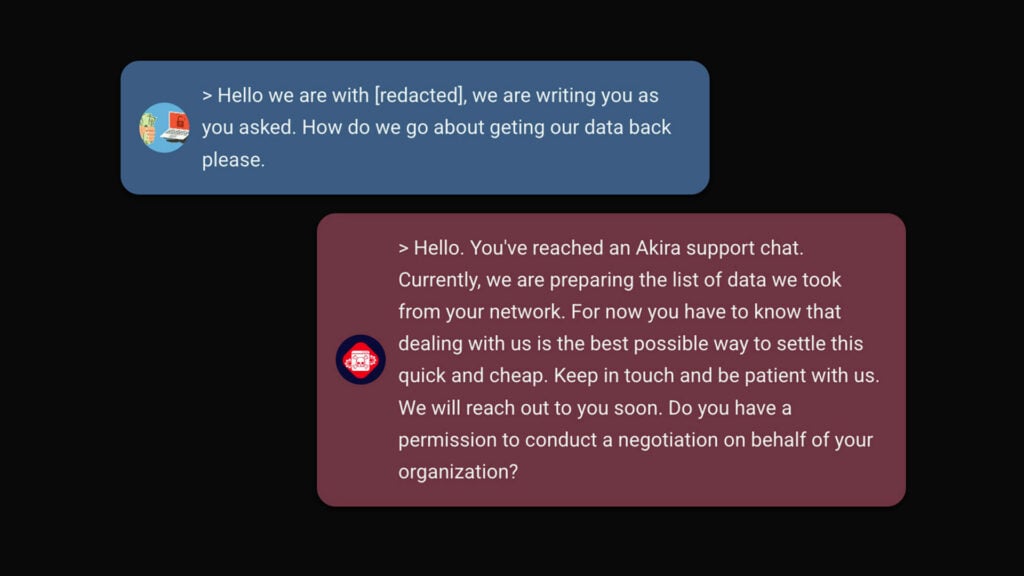Blog
Offensive Security and Cyber Threat Intelligence: The Dynamic Duo Against Adversaries
In an age where cyber threats evolve faster than ever, traditional approaches to security often fall short. Firewalls, automated vulnerability scans, and endpoint defenses are essential, but they lack the depth needed to outpace today’s determined adversaries. Attackers don’t just exploit vulnerabilities—they strategically target weaknesses unique to each organization. To counter these threats, businesses must […]

In an age where cyber threats evolve faster than ever, traditional approaches to security often fall short. Firewalls, automated vulnerability scans, and endpoint defenses are essential, but they lack the depth needed to outpace today’s determined adversaries. Attackers don’t just exploit vulnerabilities—they strategically target weaknesses unique to each organization. To counter these threats, businesses must pair Offensive Security with Cyber Threat Intelligence (CTI), forming a powerful synergy that emulates real-world attacks to uncover and mitigate their most critical risks.
This approach isn’t just effective—it’s essential. Here’s why.
Moving Beyond Checklists
Many organizations rely on standardized tools and processes to assess their security. These might include penetration tests that follow industry-standard methodologies or red-team exercises that tick off common exploits. While these efforts are a good start, they fail to capture the complexity and nuance of a genuine cyberattack.
Attackers don’t operate with a playbook. They tailor their tactics to the environment, employing creative strategies to exploit vulnerabilities defenders never anticipated. Effective Offensive Security must do the same, using adversary emulation to simulate the types of attacks most likely to target the organization. This requires more than technical skills—it demands contextual intelligence provided by CTI to inform the operation.
For example, a financial institution faces vastly different threats than a tech startup. Without CTI, red teams might simulate generic ransomware attacks while overlooking sophisticated social engineering or supply chain infiltration—the exact methods used by adversaries targeting their sector.
The Role of Cyber Threat Intelligence in Offensive Security
CTI transforms Offensive Security into a targeted and adaptive defense mechanism. Instead of guessing what an attacker might do, CTI provides the data needed to simulate attacks based on real-world threats. This includes:
- Threat Actor Profiles: Who is most likely to attack your organization? Is it state-sponsored groups, cybercriminal gangs, or hacktivists? CTI identifies their tactics, techniques, and procedures (TTPs).
- Sector-Specific Risks: What vulnerabilities and attack vectors are prevalent in your industry? CTI highlights these risks, allowing red teams to focus on the most relevant scenarios.
- Attack Motivation: Why would an attacker target your business? Whether it’s intellectual property theft, financial gain, or disruption, CTI helps emulate the attacker’s intent.
- Evolving Threat Landscapes: Threats change rapidly. CTI ensures offensive exercises reflect the latest adversary behaviors, from the use of advanced phishing lures to emerging zero-day exploits.
By integrating CTI, Offensive Security becomes a mirror of the real-world threat landscape, helping organizations prepare for the exact challenges they’re likely to face.
The Power of Adversary Emulation
Adversary emulation is the cornerstone of an effective Offensive Security and CTI partnership. Unlike traditional penetration testing, which often focuses on identifying technical vulnerabilities, adversary emulation seeks to replicate an attacker’s full lifecycle—from initial access to achieving their ultimate objective.
This approach involves:
- Reconnaissance: Mapping the organization’s external attack surface to identify weak spots, just as an adversary would.
- Custom Exploits: Developing attack paths specific to the organization’s infrastructure, exploiting vulnerabilities that generic tools might miss.
- Lateral Movement: Testing how effectively an attacker could navigate through systems, bypassing security measures to reach critical assets.
- Exfiltration Simulations: Mimicking data theft or operational disruption to gauge how quickly and effectively the organization can detect and respond.
Adversary emulation doesn’t just expose technical flaws—it reveals gaps in processes, policies, and personnel readiness. This holistic view of security is invaluable for organizations aiming to strengthen their defenses against sophisticated threats.
Real-World Success Stories
The effectiveness of pairing Offensive Security with CTI is evident in real-world case studies. Consider the infamous SolarWinds attack, where attackers infiltrated trusted software updates to gain access to thousands of networks. A CTI-driven approach might have identified the tactics used by the threat actors responsible, enabling red teams to simulate similar supply chain attacks and recommend stronger mitigation strategies.
Similarly, cloud-focused businesses have benefited from adversary emulation tailored to their environment. By simulating credential-based attacks and privilege escalation in the cloud, red teams informed by CTI have helped organizations identify and address misconfigurations that could have led to catastrophic breaches.
Why This Approach is Non-Negotiable
Modern cyber defense demands a proactive, intelligence-led strategy. Attackers are constantly innovating, exploiting gaps in technology, processes, and human behavior. By combining the creativity and adaptability of Offensive Security with the precision of CTI, organizations can:
- Uncover Hidden Weaknesses: Go beyond obvious vulnerabilities to identify deeper, more subtle risks.
- Anticipate Attacker Behavior: Understand not just how an attack might happen, but why, enabling better-prepared defenses.
- Improve Incident Response: Adversary emulation reveals how quickly and effectively teams can detect and mitigate attacks, providing actionable insights for improvement.
- Stay Ahead of Emerging Threats: With CTI feeding into every exercise, organizations are prepared for the latest attacker tactics.
Building a Security-First Culture
This approach isn’t just about tools and tactics—it’s about mindset. Organizations that embrace Offensive Security and CTI must foster a culture of continuous learning and innovation. Teams should be encouraged to think like attackers, constantly asking, “What would an adversary do?”
Regular adversary emulation exercises, combined with real-time threat intelligence, ensure that defenders stay sharp and prepared. This proactive stance builds resilience, allowing businesses to face even the most advanced threats with confidence.
Conclusion
In today’s threat landscape, complacency is not an option. Cybersecurity requires more than reactive measures—it demands a proactive, intelligence-led approach that mirrors the ingenuity of modern attackers. By pairing Offensive Security with Cyber Threat Intelligence, organizations can shift from playing defense to taking the offensive, identifying and mitigating risks before they’re exploited.
This isn’t just a strategy—it’s the future of cybersecurity. Attackers aren’t slowing down, and defenders must rise to the challenge. It’s time to adopt the mindset, tools, and tactics needed to stay ahead.
Because in the battle for cybersecurity, understanding the enemy is half the fight—and outsmarting them is the ultimate goal.
About the author

David Kasabji
Principal Threat Intelligence Analyst
David Kasabji is a Principal Threat Intelligence Analyst at the Conscia Group. His main responsibility is to deliver actionable intelligence in different formats according to target audiences, ranging from Conscia’s own cyberdefense, all the way to the public media platforms. His work includes collecting, analyzing, and disseminating intelligence, reverse engineering obtained malware samples, crafting TTPs […]
Related











